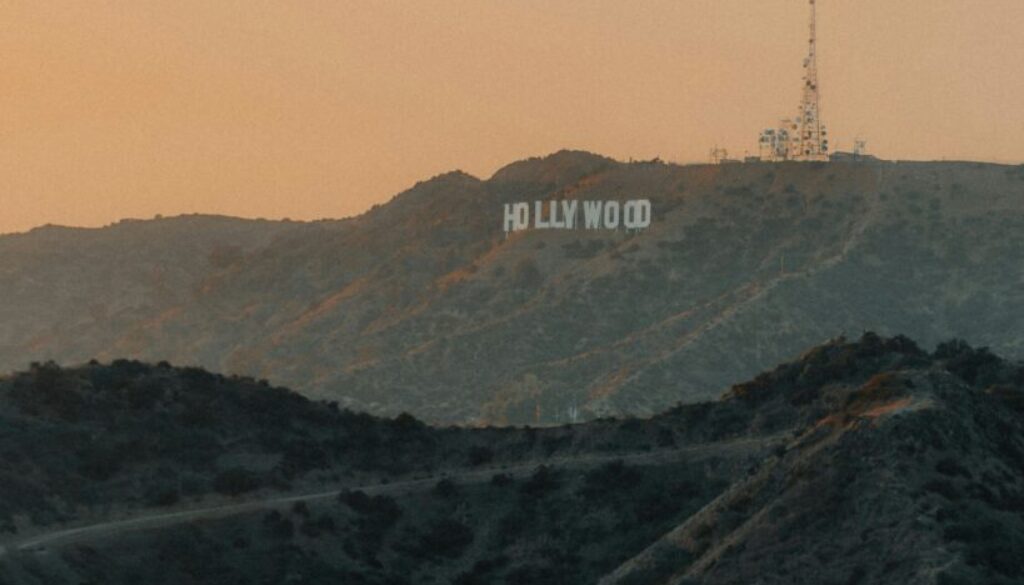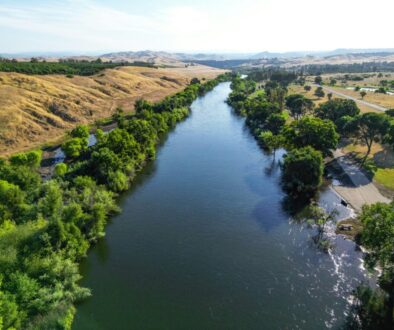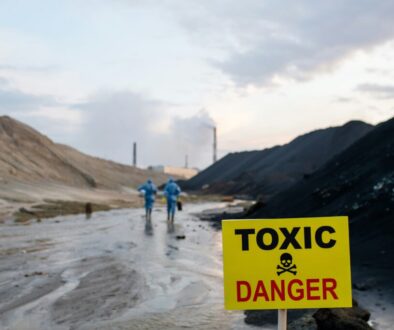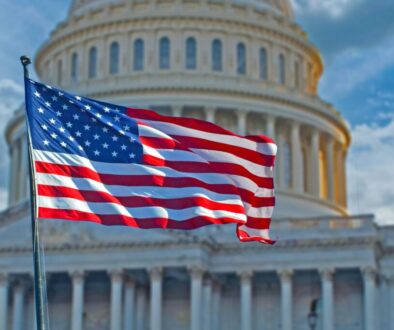Postcard from California: The long-term public health toll of the LA fires

The horrific fires that incinerated more than 40,000 acres in Southern California last month were still burning when newly-inaugurated President Trump flew in to view the devastation. At a Jan. 24 press briefing with local officials, he groused that he had heard people who lost their homes would not be allowed to rebuild for up to 18 months.
Los Angeles Mayor Karen Bass pointed out that, first, burned lots had to be cleared of hazardous waste. “The most important thing is for people to be safe,” she said.
“What’s hazardous waste?” Trump retorted. “You’re going to have to define that. Are we going to go through a whole series of questions on determining what’s hazardous waste? I just think you have to allow people to go on their site and start the [cleanup] process tonight.”
Despite what Trump may think, federal regulators have established clear definitions of hazardous waste. When the Palisades and Eaton fires consumed more than 16,000 homes and other structures in the Los Angeles area, they left behind over 4.25 million tons of it. While the fires have been contained, exposure to dangerous toxins in that lingering waste and in the smoke that choked the region for more than three weeks will, over time, claim many more victims than the 29 lives lost in the flames.
Heat, drought and the Santa Ana winds were the fires’ direct causes, but scientists say conditions were made worse by climate change. Park Williams, a hydroclimatologist at the University of California at Los Angeles, told NPR: “These fires are very likely more intense and dangerous … because of global warming.”
US Environmental Protection Agency (EPA) workers in hazmat gear are racing against a Trump-ordered Feb. 25 deadline to inspect each burn site and perform an initial cleanup. “We have to move five times the speed based on the directives we are getting,” an EPA official told Reuters. “Normally, this takes months.”
The ash and debris at any site reportedly can be laden with lead, arsenic, other heavy metals, asbestos, pesticides and an array of cancer-causing compounds. Of particular concern are lithium-ion batteries from electric vehicles, cell phones and electronics, which can spontaneously explode and release toxic gases long after exposure to extreme heat.
The EPA will truck smaller items of debris to a temporary dump site at a county park east of Los Angeles, which area residents fear could leak and contaminate the San Gabriel River. The US Army Corps of Engineers will then move in with heavy equipment to remove the remaining rubble and ash, at no expense to homeowners, to a more permanent dump site.
In the wake of the fires, Trump has spread much misinformation, including the absurd claim that fire hydrants ran dry because environmental regulations restricted the flow of water from Northern California. But he was right about at least one thing: The Corps of Engineers says it could take a year or longer to clear all burn sites for rebuilding, although homeowners who want to speed the process can choose to hire certified contractors at their own expense.
Citing the danger of toxic exposure, the Los Angeles County Department of Public Health issued an order prohibiting the attempted cleanup of burn sites before the EPA completed inspection and preliminary cleanup. But many fire victims, perhaps encouraged by Trump’s words, ignored the order and, as soon as the flames were out, sifted through the wreckage of their homes, often without wearing protective gear.
Jane Williams, executive director of California Communities Against Toxics, compared the premature return of Los Angeles homeowners to the aftermath of the terrorist attacks that brought down the World Trade Center in September 2011. Thousands of people exposed to the Trade Center ash and rubble have since developed illnesses, including many types of cancer, asthma, and other respiratory illnesses. Almost 5,000 have died.
“It’s exactly what happened with the Twin Towers,” Williams told the Los Angeles Times. “This is the disaster after the disaster: Tens of thousands of people will go back to their properties, and most of them will not wear masks.”
Wastewater leaching from dump sites and rain falling on burn sites will eventually wash ash and chemicals into the Pacific Ocean, where researchers fear it could damage the marine ecosystem and enter the food chain. Rasmus Swalethorp, an oceanographer at the University of California at San Diego’s Scripps Institution of Oceanography, told the Los Angeles Times: “It’s certainly going to contain a lot of things that we ideally don’t want to see in our oceans — and in our soils, for that matter, and our water streams, and certainly not on our dinner plates.”
Scientists say the smoke that millions of Southern Californians, even those far from the flames, breathed during the fires will also lead to thousands of premature deaths in years to come.
“The eventual death toll from the disaster is likely to be far, far, higher, once the health effects from the toxic smoke from the fires are fully realized,” Jeff Masters, Ph.D., wrote for Yale University’s Climate Connections news service.
Wildfire smoke contains high levels of tiny particles that can penetrate deep into the lungs and other organs, increasing the risk of cardiovascular and respiratory disease. Last year, a study led by researchers from the Fielding School of Public Health at the University of California at Los Angeles calculated that more than 50,000 Californians died prematurely from exposure to wildfire smoke between 2008 and 2018.
Smoke from urban fires is even more dangerous than smoke from forest fires, as it contains chemicals from the plastics, paints, pipes and household cleaners in homes.
At the height of the Los Angeles fires, airborne lead spiked to levels 100 times higher than normal while chlorine levels spiked 40 times higher, according to measurements by ASCENT, a federally funded network of atmospheric scientists.
Wildfires are “no longer just about burning trees and grass” but are “fueled by the very materials that make up our homes and cities,” Haroula Baliaka of the California Institute of Technology, a member of the ASCENT network, told The New York Times. The Los Angeles fires, she said, were “a wake-up call.”
That’s a warning heard with depressing regularity after every “worst-ever” fire, hurricane or other disaster on a planet besieged by climate change. This time, let’s hope we’re listening.
- Bill Walker has more than 40 years of experience as a journalist and environmental advocate. He lives in California’s San Joaquin Valley.
(Opinion columns published in The New Lede represent the views of the individual(s) authoring the columns and not necessarily the perspectives of TNL editors.)
(Featured image by Getty Images for Unsplash.)
 EWG
EWG



February 11, 2025 @ 1:49 am
So very, very difficult to read.
My lungs weep for everyone there, including wildlife.